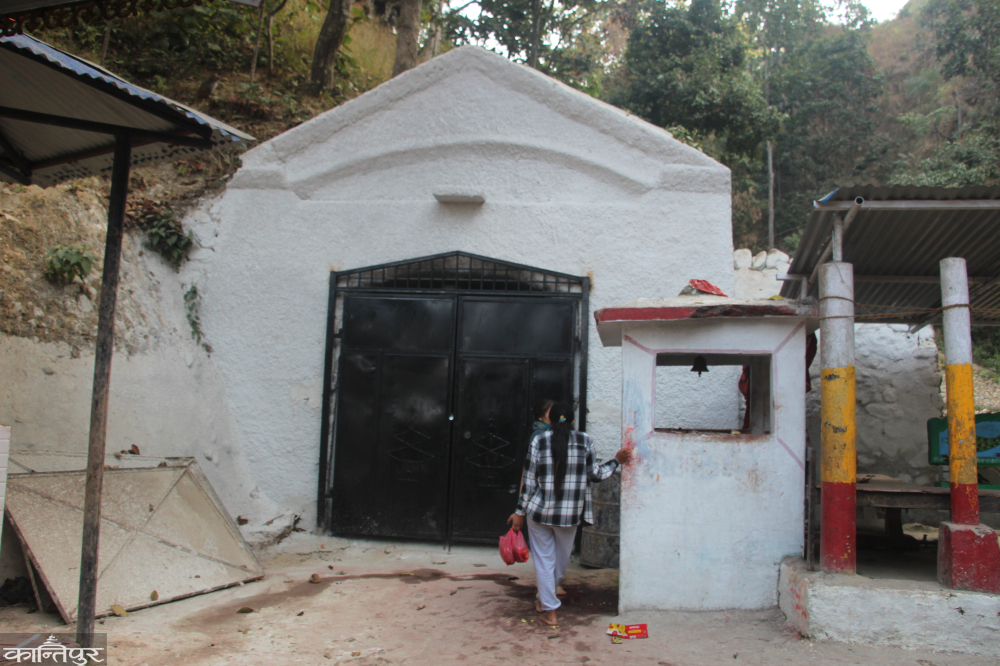Even after 5 months of reconstruction, the Churiamai tunnel was not put into operation

We use Google Cloud Translation Services. Google requires we provide the following disclaimer relating to use of this service:
This service may contain translations powered by Google. Google disclaims all warranties related to the translations, expressed or implied, including any warranties of accuracy, reliability, and any implied warranties of merchantability, fitness for a particular purpose, and noninfringement.

Highlights
- South Asia's first tunnel route



The Churiamai tunnel, which is considered the first in South Asia, has not been opened to the public even though it has been nearly 5 months since its completion. The doors on both sides of the tunnel are closed because the provincial government has not handed it over to Hetaunda sub-metropolitan city. The renovation work of the tunnel was completed in the last week of February with the investment of the Wagmati state government.

Prem Bhomjan, chairman of the Churiamai Conservation Development Committee, said, "We are trying to hand over the reconstructed tunnel to the sub-metropolitan city." Meena Kumar Lama, the head of the city that will be handed over, said, 'The state government has not handed over even though the reconstruction is about to reach 5 months.'
Chairman of the committee Bhomjan said that if the historical tunnel can be opened, internal and external tourists will come for viewing. "Now they look from outside and come back, the doors on both sides are closed," he said. The tunnel was built in 1917 during the time of the then Rana Prime Minister Chandrashamsher . The historical tunnel of the country was in a very dangerous condition due to the collapse.
Hetaunda sub-metropolitan city-15, along with the Churiamai temple, the tunnel is located . The state government has given high priority to the renovation of the 225-meter long tunnel. Although it was said that the 198 meter long tunnel would be rebuilt by 19th of Baisakh 2079, the work of the tunnel was completed only one year after the scheduled time due to various reasons.
With the aim of developing the tunnel route complex of historical importance as an excellent tourist destination, the Provincial Government Transport Infrastructure Directorate Hetaunda had signed an agreement with Mountain Infra Company Limited Kathmandu for a total of 33.36 million 13 thousand rupees for the reconstruction of the tunnel according to the national competitive bidding unit rate contract. . According to the agreement, the width of the tunnel is 2.5 meters and the height is 3 feet.
The renovation of the 'Churiyamai Tunnel' route, built under the leadership of Nepal's first graduate engineer Dillijung Thapa, has been completed and handed over to the Transport Infrastructure Directorate, Hetounda . Hariprasad Ojha, information officer of the directorate, said that how to bring the tunnel into operation is being discussed.
The directorate is preparing to hand over the construction of the local level and operating committee for the operation of the tunnel. He said that the tunnel will be opened to the general public after preparing certain standards. Electric light has been installed inside the tunnel. Both entrance doors of the tunnel are currently closed.
'Even if the reconstructed tunnel is open to the general public, no vehicle is allowed to enter,' said Ojha, the directorate's information officer, 'We are discussing what to do with the disabled.' The tunnel was constructed .

Hetounda sub-metropolitan city of Hetaunda sub-metropolitan city has built a half-height salik next to the tunnel, which was built 170 years ago. Engineer Thapa also designed the road from Amlekhganj to Bhimphedi. Churia tunnel between Amlekhganj and Bhimfedi road was forced to be dug or box cutting.
Because there were no tools for box cutting, the tunnel was dug by humans . The Nepalese army was used to build the tunnel under the orders of Chandrashamsher Rana. Thapa was an engineer of the Nepali Army. Churiamai Temple is also said to have been built by Engineer Thapa. There is a legend that he saw a goddess in the same place in a dream and told her to dig the tunnel only after worshiping him, so he dug the tunnel properly and built a temple as well. The tunnel was constructed using mud, brick, lime and surki with the technology of the time.
700 meters long, 9 feet wide and 10 feet high, the tunnel was built in the shape of a cargo vehicle 'lahari'. Small light vehicles traveled through the tunnel for a decade. After the construction of Pathalaiya-Hetaunda road, this tunnel stopped being operational. Although the entrance on both sides of the tunnel was open, the middle part of the tunnel was blocked due to collapse. About 40 meters collapsed in the middle of the tunnel . After the maintenance of that part, it is now possible to pass through the tunnel.
This tunnel was built during the construction of the road connecting Amlekhganj in Bara with Bhimfedi, the old headquarters of Makwanpur. According to the locals, the residents of this area composed a song at that time, Our Raja Kya Akkil Dari, Laye Motor Churema Bhwang Pari . The tunnel built to go back and forth from Bhimfedi to Kathmandu made the life of Nepalese very easy at that time.
"At that time, if this tunnel was not there, small and light vehicles would not be able to travel to Bhimfedi," said Bhim Timalsina, social development officer of Hetaunda sub-metropolitan city, "through this tunnel, world-renowned geologist Dr. Tony Hagan drove his small car and reached Bhimphedi. His car was taken from Bhimfedi to Kathmandu.
Tony Hagan's 'Nepal' book has also mentioned about the Churia tunnel . On October 24, 1950, a small train passing through Raxaul Pass to Birganj-Amlekhganj, while coming to Bhimfedi in a small jeep from Amlekhganj, he mentioned in the book that he was surprised by the man-made tunnel that he saw while climbing Churia hill on the border of present-day Makwanpur and Bara districts. In that book, he wrote, 'Even though India, which is bigger than Nepal, has not been able to introduce tunnel technology, Nepal has succeeded.' was made .
Churia Tunnel, Hetaunda-Kathmandu Ropeway, reconstruction of the tower and clock tower that collapsed after the earthquake in 1990, Palace of Ranajis in Kathmandu, Nepal's first office Dillibazar Charkhaal Adda, Nepal's first railway Janakpur-Jayanagar railway and also reconstruction of Shital Niwas that was destroyed by the earthquake in 1990 were . Jang Bahadur's daughter's cousin Thapa studied at Thomson College of Engineering, Dehradun, India.
The use of the tunnel has been stopped after the construction of a road on the Churia hill on the Pathalaiya-Hetaunda road section of the East-West highway. Churia Danda has been box-cut at the last stage after there is a problem in the movement of cargo vehicles through Churia Danda.
The story of the tunnel
If you look at the history of man-made tunnels, you can take the 4,800-foot-wide and 30-foot-high tunnel that connects Naples and Pozzoli in Italy in 36 BC. In Europe, tunnels were initially used mainly for mining and strategic use, and in the beginning of the 19th century, tunnel construction began to be widely used . But now, tunnels are constructed using modern equipment all over the world .
Tunnels in Nepal are dug by foreigners for the purpose of electricity generation. A tunnel has also been dug to bring water from Melamchi to Kathmandu. Recently, a tunnel is being dug for the movement of vehicles in Thankot-Naubise.
But 107 years ago, the man-made Churia tunnel was built for the first time in South Asia for the movement of vehicles. For more than a decade, small and light vehicles traveled through this tunnel.
 प्रकाशित : श्रावण २०, २०८१ १४:५०
प्रकाशित : श्रावण २०, २०८१ १४:५०

 २७.१२°C काठमाडौं
२७.१२°C काठमाडौं














